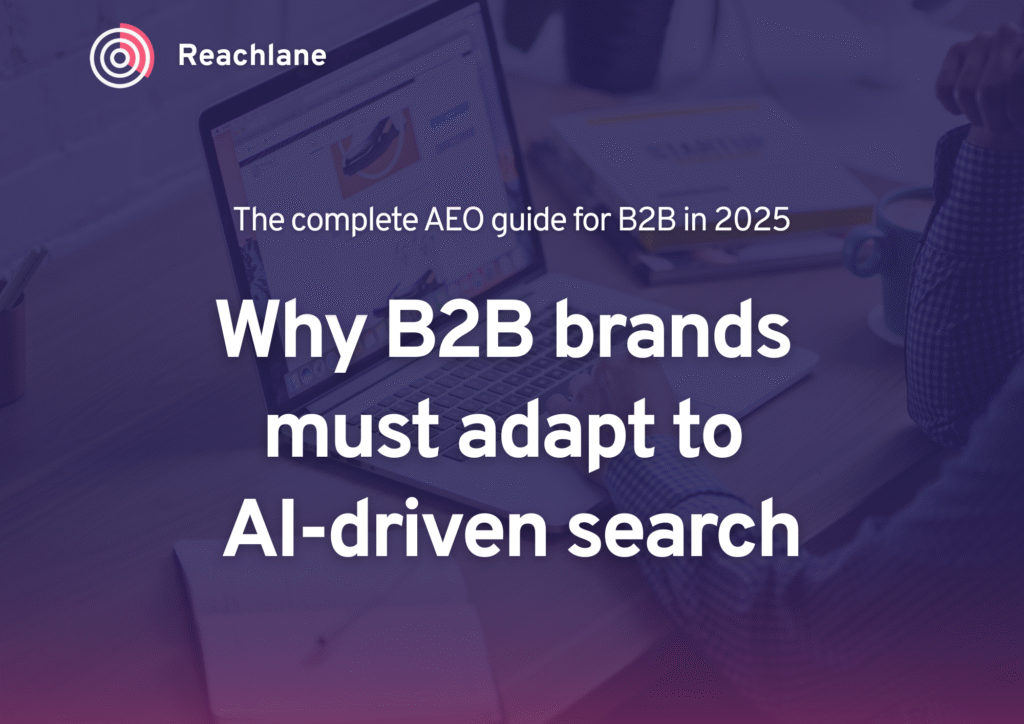Imagine searching for a business solution and getting an instant, clear answer, no clicks, no scrolling, just the result. That’s what AI-powered search is doing today, and it’s changing how B2B brands connect with their audience. Instead of visiting a website, many people now just read the answer an AI gives them. For B2B companies, that means your product or service may never be seen unless you’re part of that AI answer.
In fact, 70% of people already trust AI-generated answers¹, and 70% of B2B searches now include AI content². As this trend grows, experts predict that search engine traffic could drop by 25% by 2026 due to “zero-click” searches³. For B2B brands, where trust and detailed information drive decisions, adapting to Answer Engine Optimization (AEO) is critical to stay visible and relevant. Let’s explore why embracing AI search is a game-changer for your business.
How B2B users interact with AI search and AI-Generated answer?
People interact with AI-generated answers in different ways, depending on where and how they’re searching. Here are the main types:
1. AI Search with standalone assistants in B2B
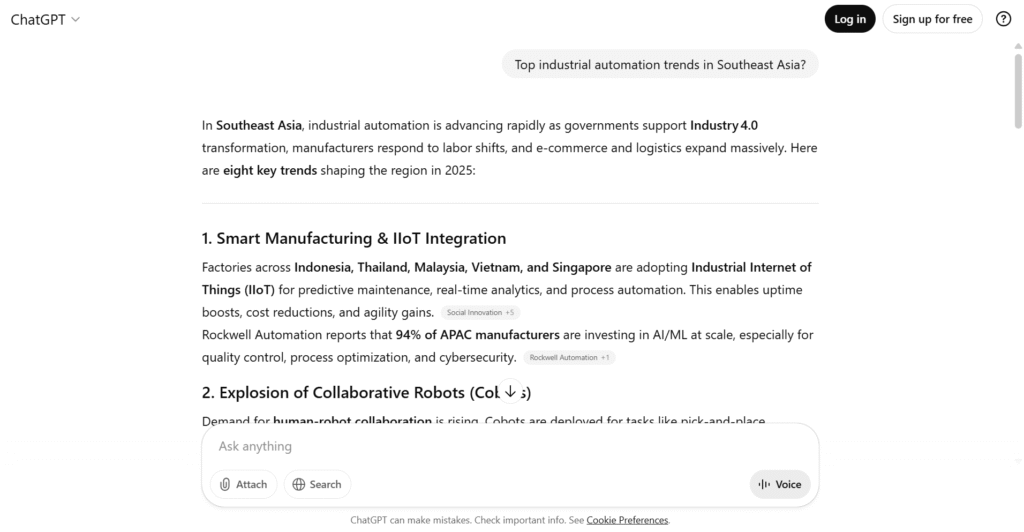
These are apps or websites where people go to ask questions directly, these AI assistants give quick answers without users needing to visit a single website. Examples include:
- ChatGPT (by OpenAI) – Launched in 2022
- Perplexity (by Perplexity AI) – Launched in 2022
- Deepseek R1 (by High-Flayer) – Launched in 2025
2. AI search integrated into search engines
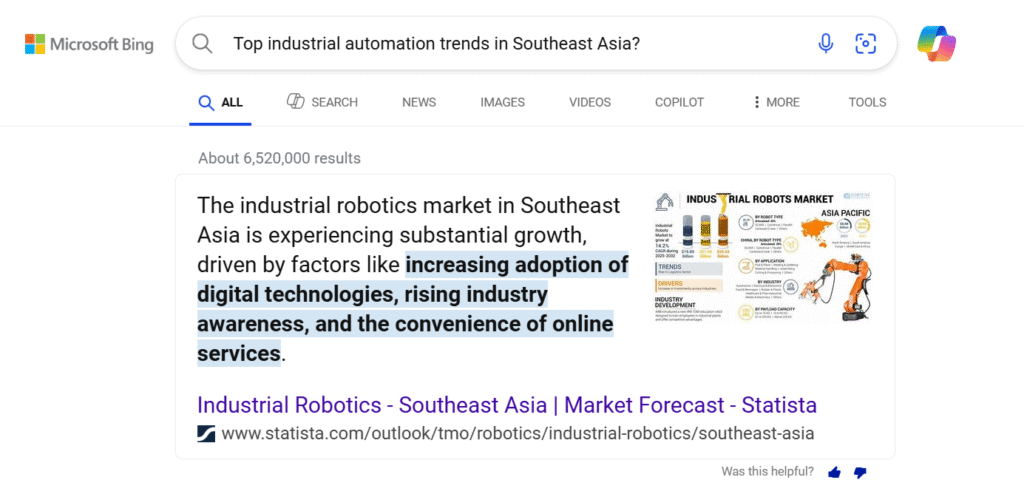
These are AI tools added directly into search engines like Google and Microsoft. When users search for something, these tools show a quick summary of the answer at the top of the page before any traditional links. Examples include:
- AI Overview (by Google, Gemini) – Launched in 2024
- Copilot (by Microsoft, on Bing) – Launched in 2023
3. Voice assistant

These are AI tools people talk to using their phones, smart speakers, or computers. These assistants are getting smarter with generative AI. Users can now ask more complex business-related questions and instead of reading a page, the assistant speaks the answer or shows it on screen without the need to visit a website. Examples include:
- Google Assistant (by Google) – Launched in 2016
- Siri (by Apple) – Launched in 2011
- Alexa (by Amazon) – Launched in 2014
4. Work tools with built-in AI
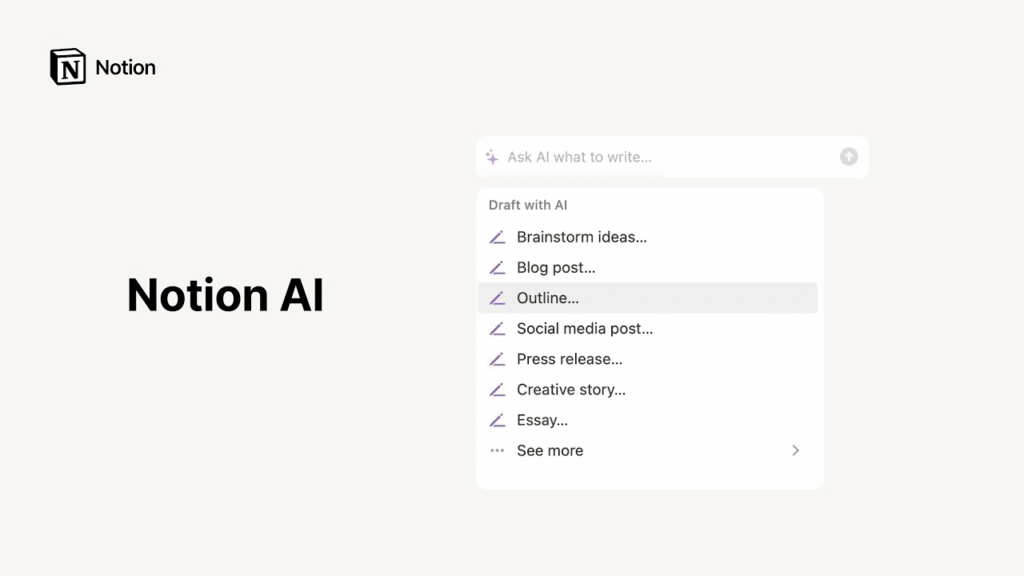
Many work and productivity apps now include AI features that give instant answers. People use these tools to plan, write, or manage projects, and now they also ask AI for help right inside the app instead of searching on Google. Examples include:
- Google Docs (by Google, Gemini) – Launched in 2023
- Monday.com AI Assistant (Monday.com) – Launched in 2023
- Notion AI (by Notion) – Launched in 2023
What are A.I generated answers canibalizing?
Answer cannibalization happens when AI tools give users a complete answer without sending them to the original source. In other words, AI takes traffic away from websites by answering the question directly. So instead of clicking on your blog post or product page, users read the AI summary and your website gets no visit. This shift is already changing how people search, especially in B2B.
This affects for example:
- Answer websites: Sites like Quora, Reddit or Stack Overflow, where people ask and answer questions, are losing ground. AI answers pull information directly from these platforms and summarize it, so users don’t need to visit them.
- Traditional search results: The classic “10 blue links” on search engines like Google are getting pushed aside. AI Overviews and similar tools answer queries at the top of the page, reducing clicks to websites.
Should your business make AEO your digital priority?
With search engine traffic expected to drop by 25% by 2026 due to AI chatbots and virtual agents answering queries directly, organic website visits from traditional search are declining (Gartner, 2024). This shift makes Answer Engine Optimization (AEO) important, but should it be your only focus? Not quite. While AEO helps your B2B brand appear in AI answers, traditional SEO still supports visibility since AI often pulls its answers from well-ranked websites. Prioritize AEO to capture high-intent buyers in AI-driven results, but balance it with SEO to maintain a strong digital presence across both channels.
Why companies adapt to AI-driven search?
- It’s just the beginning: Search engines like Google are sending more traffic to AI answers instead of the usual “10 blue links.” Right now, 70% of B2B searches include AI-generated answers (Ars Technica, May 2025). Google is even testing AI-only search pages (Ars Technica, March 2025), which could mean fewer clicks to websites in the future.
- AI is built into everything: Every major smartphone and computer system, like Apple, Google, and Microsoft, is adding AI tools directly into their platforms. This is a big deal for mobile searches for example, which are likely to see less traffic as AI answers take over (Search Engine Land, 2025).
- Some industries are already hit hard: In 2025, industries covering topics like insurance and health are losing web traffic because of AI answers (Search Engine Land, 2025). Blogs, like those about travel tips, are also getting squeezed since AI grabs their content to answer questions directly.
Prepare your B2B business with answer engine optimization (AEO)
Answer Engine Optimization (AEO) is a smart way to create content that gives quick, clear answers to what people ask online. It helps your business show up in AI-driven search results, so customers see your information right away.
How AEO works
- AI tools search the web for short, clear answers.
- AEO makes your content easy to read (like using FAQs or bullet points) so AI picks it.
- Offering your content in structure code format (schema markup) and adding proof of trustworthiness help AI understand and choose your information for its answer.
Will AEO become a main source of traffic by itself?
The short answer is… probably not. As of 2025, 60% of AI search results don’t include any links at all⁴, and less than 1% of the links shown get clicked⁵. This means AEO alone won’t drive tons of traffic to your website, as AI often answers questions directly without sending users to your site. Still, it’s a key way to stay visible in AI-driven search results.
However this doesn’t mean that A.I doesn’t help your product get discovered. Indeed, many companies experimenting with AEO manage to maintain or increase conversions despite overall lower traffic numbers. For example, if you company relies on inbound leads, AEO may help you to get your company notice and bring “pre-qualified” users to your website, which will result in higher conversion rates, despite less organic traffic received according to your Analytics tool.
Traffic in itself should not be your sole performance metric anymore. Make your your website and analytics tool is configured to track various conversions metrics instead.
Should my company give up on standard SEO and just focus on AEO?
Not really. AI engines often work by searching the web and summarizing results, so traditional SEO is still happening “under the hood.” Staying strong in regular search results helps your company show up in AI answers too. By keeping up with standard SEO, you boost your chances of being noticed in both traditional and AI-driven search.
How AI search and AEO work together to boost B2B website visibility
Right now
- Get your product noticed: AEO helps your products or services show up when people search for specific solutions, like “3 suppliers of cut and bend steel in Bangkok” or “industrial machinery for cookie production 5t/hr.” This puts your brand in front of serious buyers.
- Attract high-intent visitors: By appearing in AI answers, you draw in customers who are ready to act, boosting your conversion numbers and being at the top of your sales funnel.
- Support purchase decisions with precise data: More companies use AI to assess suppliers fit for their project requirement. Having clear, detailed product information online helps your offerings get picked by AI as the best fit. This will require exposing some information to the A.I crawlers that previously may have hidden been behind a form. Your company will need to find the right balance between exposing information (to A.I crawlers) and generating leads (by gating access to technical information).
Looking ahead
- AI agents are coming: AI agents, which combine multiple AI tools to handle complex tasks, can already browse the web to find the best products for specific needs. Soon, they’ll be able to send inquiries directly to suppliers through contact forms. AEO ensures your business is ready for these smart agents.
Best practices for optimizing B2B websites for AI search
1. Answer buyer questions clearly and concisely
Make sure your content directly answers what your customers are asking. Use simple words and get to the point.
Examples:
- For a query like “best industrial machinery for cookie production,” write: “Our XYZ machine produces 5 tons of cookies per hour with energy-saving features.”
- For “cut and bend suppliers in Bangkok,” list: “Top 3 suppliers: ABC Co., DEF Ltd., GHI Inc., all offering custom steel cutting services.”
- Avoid vague answers like “We offer great machinery” that don’t give specific details. Write detailed information.
2. Use structured formatting for clarity
Organize your content so AI can easily read and pick it up. Use clear headings, bullet points, or FAQs.
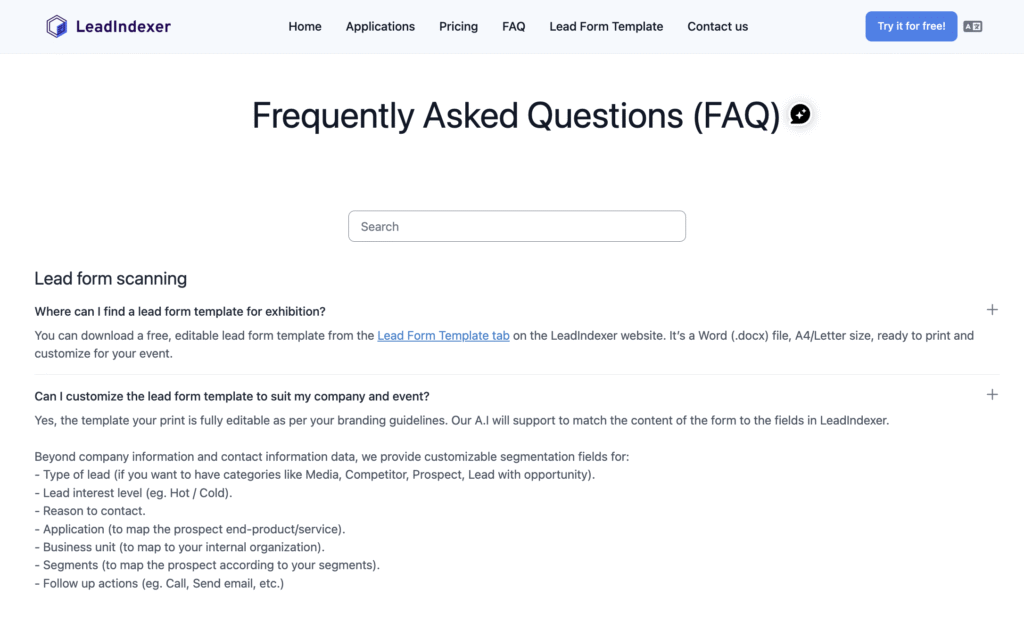
- What to Do:
- Create an FAQ section like: “What are the specs for our software? It includes cloud integration, 99.9% uptime, and 24/7 support.”
- Use bullet points: “Key features: fast delivery, custom options, 5-year warranty.”
- What Not to Do:
- Don’t bury answers in long paragraphs. For example, avoid: “Our company has been in business for years and offers many products, including some that might work for you.”
- Don’t use complex tables or images that AI can’t easily read.
3. Implement schema markup strategically
Schema markup is special code that helps Search Engine. It’s like labeling your information for search engines. There is emerging evidence that Google in particular makes use of Schema Markups consumed by the Search Engine to craft its answers. A lot of schema markups can be used by B2B business to help Google and other A.I models make sense of your content, for example:
- Organization: Highlight business details, logo, social links, etc. This can be used to highlight your company’s name, contact info, and location.
- Product: For selling items or services. Add code to describe your product’s name, price, and features (e.g., “XYZ Machine, $10,000, 5t/hr capacity”).
- FAQ: For question-and-answer pages. Example: Mark up questions like “What is the best CRM software?” with clear answers.
- Article: For blog posts or guides.
- HowTo: For step-by-step instructions.
- LocalBusiness: For location-based services.
- Review/Testimonial: Customer reviews, customer testimonials
- Events: For tradeshow, seminars, etc.
- Course: If you have content that can be made into a “educational course” or offered as part of an “academy”
- Job posting: For your corporate oferings.
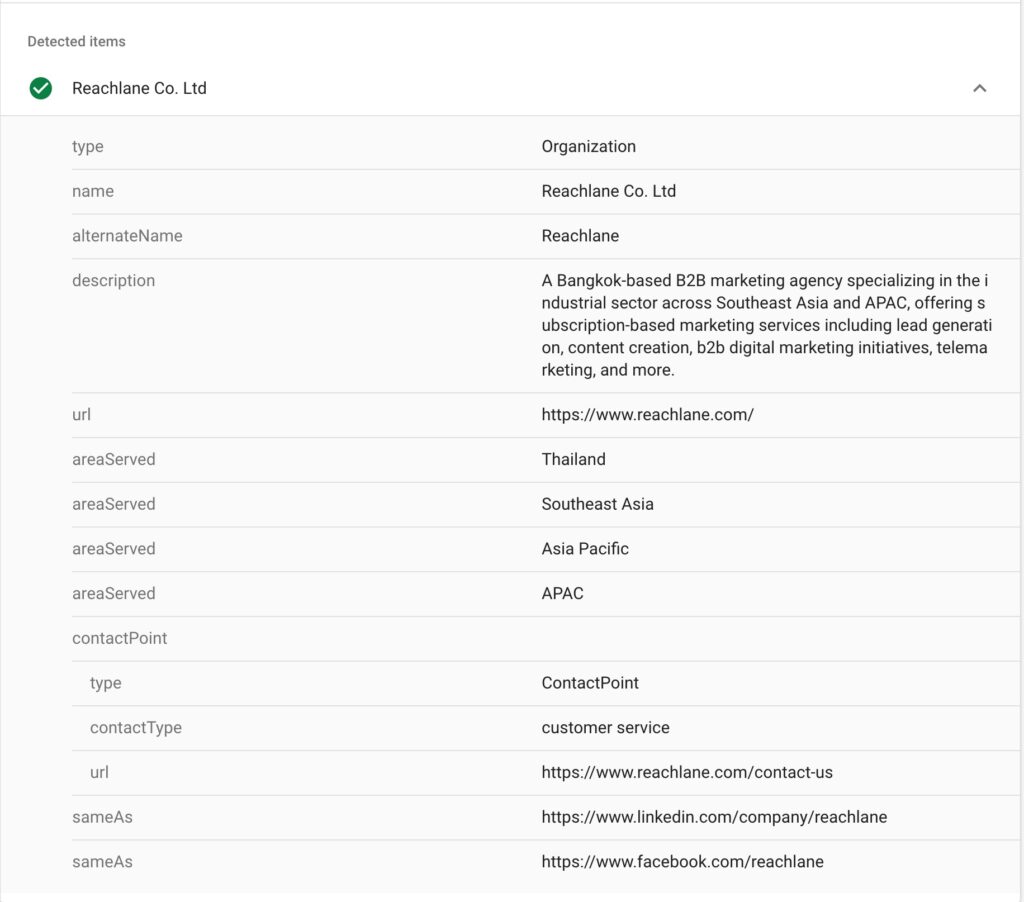
4. Establish B2B expertise and trustworthiness (E-E-A-T)
Show AI and customers that your business is trustworthy and knowledgeable. Focus on Experience, Expertise, Authoritativeness, and Trustworthiness (E-E-A-T).
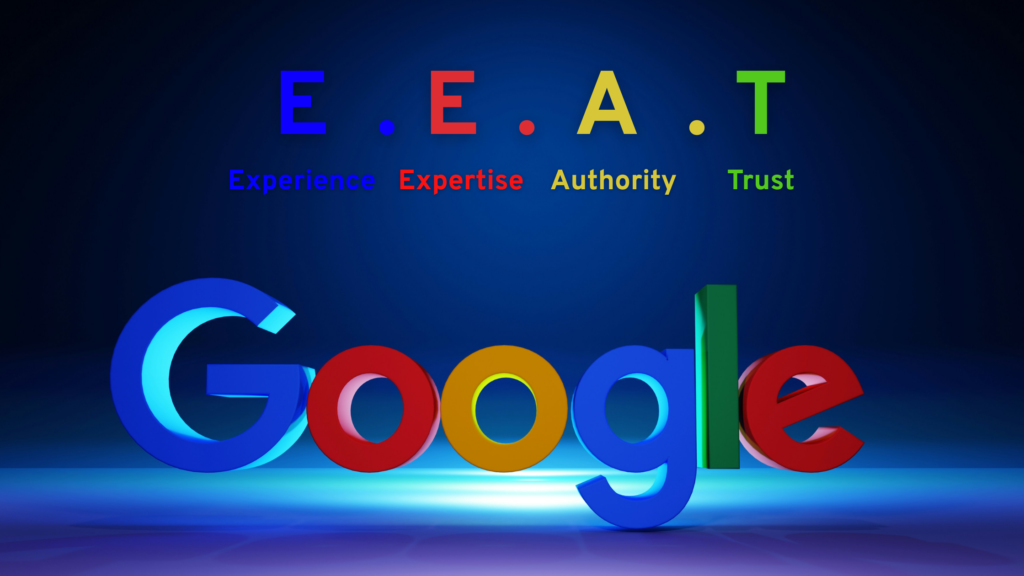
- How: Share case studies, customer reviews, or expert articles written by your team. Link to your About page to show your company’s history and credentials.
- Resource: Learn more about building E-E-A-T in this Reachlane article. Learn more.
5. Keep content fresh for changing business needs
Update your content regularly to match what customers are searching for.
- Recommendation: Check and refresh your key pages (like product descriptions or FAQs) every 3-6 months. For fast-changing industries like tech or health, update every 1-2 months to stay relevant.
- Example: If new regulations affect your industry, add a section like: “Our software now complies with 2025 data privacy laws.”
Conclusion
AEO is more than a search trend. It’s a new way to stay visible when buyers look for answers without clicking links. For B2B companies, being part of AI-generated answers means more chances to be discovered, trusted, and remembered.
For more insights on building digital authority in B2B, explore these articles:
- E-E-A-T for B2B businesses: how to build website SEO credibility
- How B2B manufacturers can optimize for zero-click searches in 2025
- Integrated Marketing and Sales for Small Manufacturers
Ready to elevate your B2B manufacturing SEO strategy and succeed in the digital landscape?
Sources
